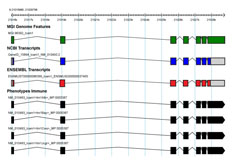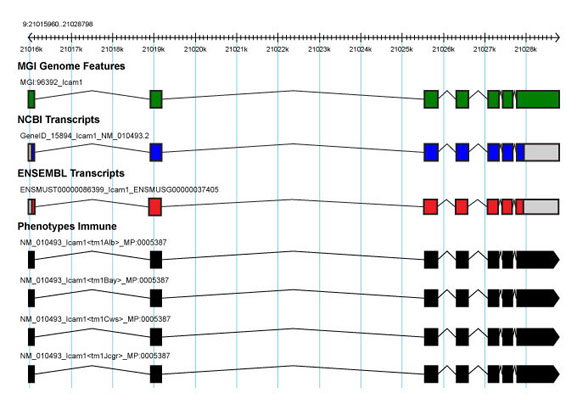|
Genes, Genome Features
MGI contains information about mouse genes, DNA segments, cytogenetic markers and QTLs. Each record may include the marker symbol, name, other names or symbols and synonyms, nomenclature history, alleles, STSs, chromosomal
assignment, centimorgan location, cytogenetic band, EC number (for enzymes), phenotypic classifications, human disease data, Gene Ontology (GO) terms, MGI accession IDs and supporting references.
See Interpreting a Genes and Markers Summary
and Interpreting Gene Details
for more information about the content of the display of a marker record as it appears in the query results.
Maps
MGI contains a variety of maps and mapping data. Users can create graphical displays of genome features on the
mouse genome using the JBrowse Genome Browser. A variety of types of Genetic Mapping Data are available from marker detail pages, including data from genetic linkage crosses, cytogenetic localization, recombinant inbred and recombinant congenic strains, and radiation hybrid mapping.
|
 Analysis Tools
Analysis Tools





